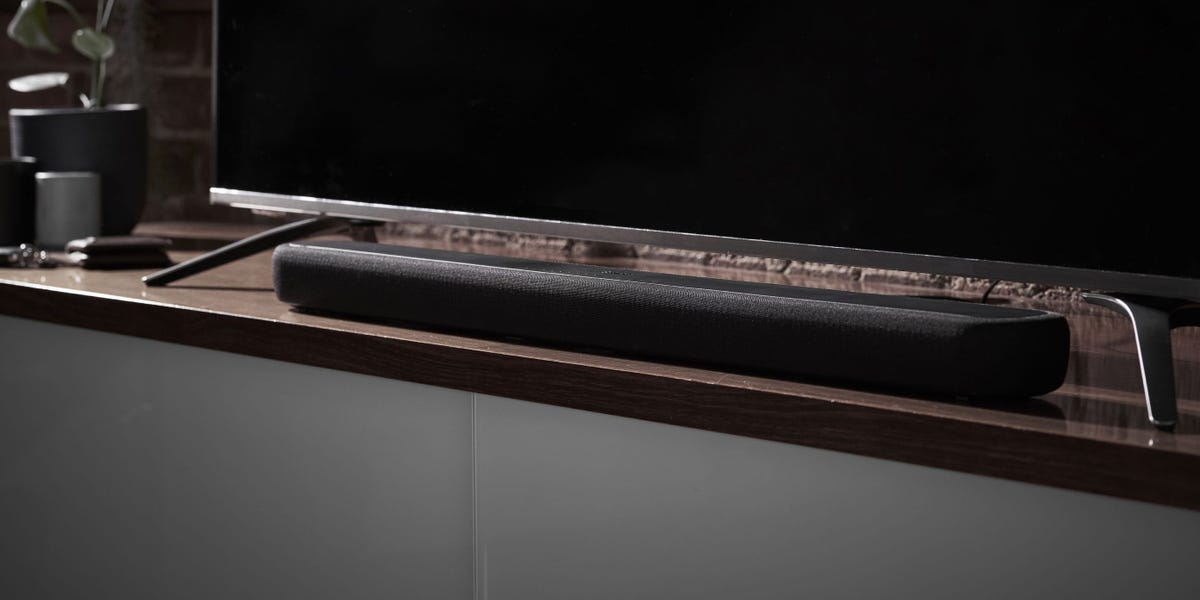Soundbar FAQs
Are soundbars really worth it?
A soundbar is a worthwhile purchase if you’re someone who doesn’t have the space or budget for traditional speakers. Soundbars can’t match the experience that the best home theater systems deliver, but they’re a convenient and often cheaper alternative that will still give your TV a solid audio upgrade.
Are soundbars better than TV speakers?
Generally, even cheap soundbars deliver better audio quality than the speakers you’ll find built into most TVs. To keep costs down and ensure that the speakers fit within a flat-screen design, TVs usually include small divers and poor placement that can result in thin, muddy sound. The best soundbars can add more dimension, clarity, and bass to your TV-watching experience.
How many speaker channels should a soundbar have?
The best soundbars can support multiple audio channels. These channels refer to how many directions sound can come from through the device. Entry-level soundbars support two channels for basic left and right stereo playback, but high-end models can support five or more channels via extra audio drivers, satellite speakers, or advanced virtualization techniques.
Channel specifications are listed as a string of up to three numbers separated by decimal points. The first number represents how many standard ear-level channels are included (left, right, center, surrounds). The second number indicates if the device includes a dedicated low-frequency channel or separate subwoofer for extra bass. The final number indicates how many height channels are included for Dolby Atmos support.
Buyers who just want a simple upgrade from their TV’s integrated audio will likely be satisfied with a compact 2.0 or 2.1 soundbar system. But if you’re looking for a more complete home theater experience you’ll want to opt for a 5.1 system or above.
What is Dolby Atmos?
Dolby Atmos is an immersive surround sound format that uses object-based audio mixing. In practice, this means that sounds can be more precisely positioned around your room, with effects placed in all directions, including above your head.
Dolby Atmos is supported on a lot of the best streaming services, including Netflix, Disney Plus, and Amazon Prime Video. Though not every movie or TV show on these services features an Atmos mix, many big new releases and original series do. Atmos is also supported on many Blu-ray and 4K Blu-ray discs.
In order to hear a Dolby Atmos mix, you need an Atmos-compatible sound system. Many soundbars now include Dolby Atmos support, but their actual performance capabilities can vary a lot depending on how many channels they support. The more audio channels they offer, the more directions you’ll be able to hear sound from.
In order to create overhead sound effects, Dolby Atmos soundbars can use one of two methods. The first involves using audio processing to try and create a simulated sense of height from regular ear-level speakers. The second method involves using upfiring drivers. Upfiring drivers are speakers built into a soundbar that are angled up instead of forward in order to bounce sound effects off your ceiling. In general, good upward firing drivers provide a much more convincing sense of overhead sound than audio processing can produce alone.
Dolby Atmos has competition from a similar audio format called DTS:X. DTS:X essentially offers the same performance but it’s not supported on as many streaming services, Blu-ray discs, or soundbars. DTS:X is a nice bonus to have when shopping for a soundbar, but we don’t think it’s as important as Dolby Atmos support.
Read the full article here




